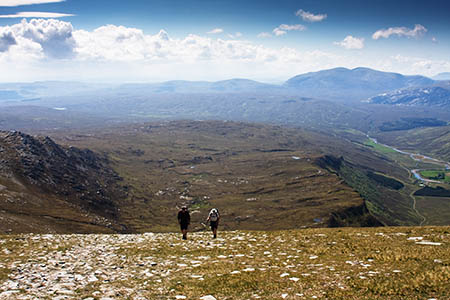One-fifth of Scotland has been classified as wild land in a map published by the official outdoors body.
Scottish Natural Heritage’s previous search for wild land turned up 13 per cent of the nation, but this has increased to 20 per cent following a comprehensive survey.
The organisation identified 43 areas, ranging from Merrick in the South to Ronas Hill and North Roe on Shetland.
SNH said the map was the result of its ongoing work to advise the Scottish Government on how much and where wild land existed north of the border.
“The map will help government and local authorities to take account of wild land in development planning, and eventually replace the map of search areas for wild land produced in 2002,” it said.
Andrew Bachell, SNH director of operations, said: “Wild land is an incredibly valuable asset for Scotland.
“It makes an important contribution to our tourism industry and images of wild places also help support Scotland’s worldwide reputation as a beautiful and impressive country.
“It makes a crucial contribution to our quality of life and we know that most Scots consider wild places to be important to them.
“Wild land also supports biodiversity and is often associated with our most impressive wildlife.
“Like all natural assets this resource must be managed sensitively if it is to be sustained.
“Our new map will enable planners and developers to take account of wild land, particularly in planning future windfarm and any other large scale developments.”
Crucially, the Monadhliath Mountains, which are at the centre of controversy over proposed windfarms, are identified as wild land.
Stuart Brooks, chief executive of conservation charity the John Muir Trust, said: “A lot of damage has been done to Scotland’s wild landscapes and ecology over the past 30 years, and if that rate of attrition were allowed to carry on for another the next 30 years there would be little or nothing left of Scotland’s wild land.
“As the Scottish planning policy consultation document spells out, many of our upland, mountain and coastal areas are sensitive to human activity and have little or no capacity to accept new development.
“We also note that there are currently a number of large-scale developments in the planning pipeline that are located in the heartland of some of our core areas of wild land, as indicated on the mapping published today by Scottish Natural Heritage.
“In the light of the content of today’s consultation documents, we would hope that these will now be reconsidered by the relevant planning authorities.”

45%
19 March 2015WILD & BEAUTIFUL , couldn't live without it